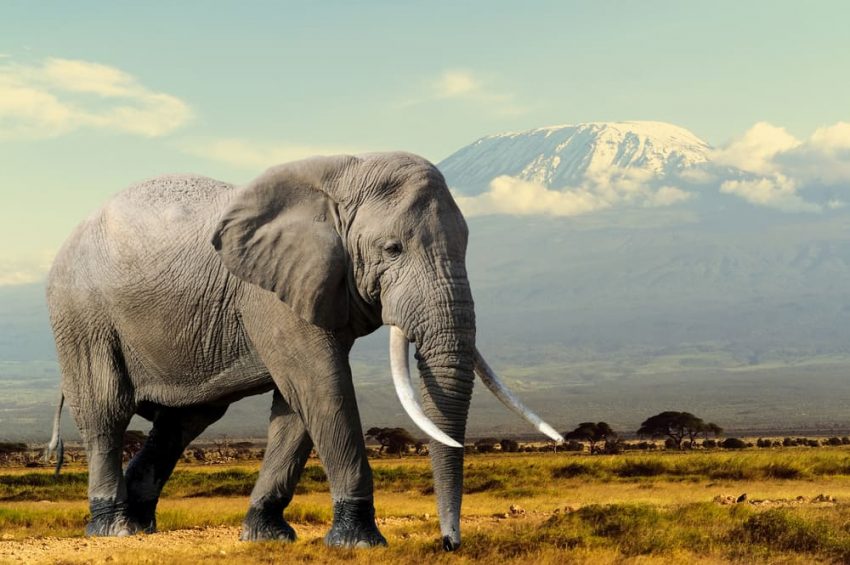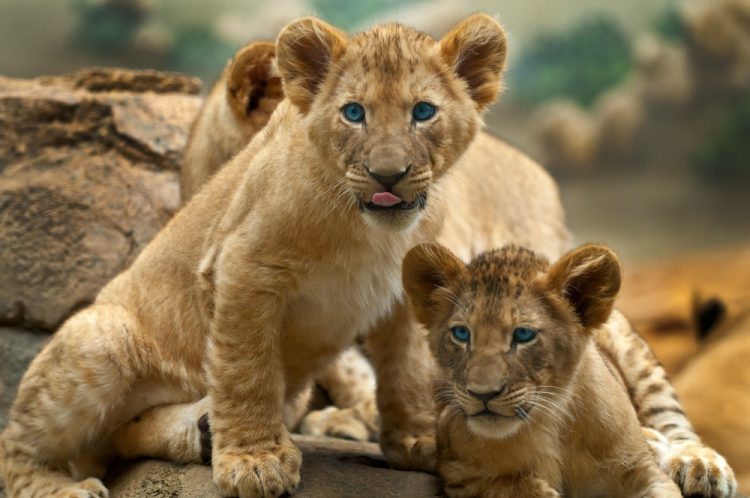The mammals They are animals characterized by the fact that the females feed their young through milk-producing mammary glands. For example: horse, chimpanzee, elephant.
They are characterized by:
- Spine. Like all vertebrates, mammals have a backbone.
- Amniotes. The embryo develops four envelopes that are the chorion, the allantois, the amnion and the yolk sac. Surrounded by these envelopes, the embryo is in a watery environment where it breathes and feeds.
- Homeotherms. Also called “warm-blooded” are animals that can regulate their temperature regardless of the ambient temperature. They have the ability to control body temperature by certain internal activities such as burning fat, panting, increasing or decreasing blood flow, or shivering.
- Placental viviparous. With a few exceptions, they are normally placental viviparous. The embryo develops into a specialized structure in the female’s womb. The exceptions are marsupials, which are mammals and viviparous but do not have a placenta and the fetus is born prematurely. The other exception is the monotremes, which are the only mammals that lay eggs, that is, they have oviparous reproduction.
- Dental. Single bone of the jaw that articulates with the skull.
- Hearing. Medium with bone chain formed by hammer, incus and stirrup.
- Hair. Although in different proportions, if the different species are taken into account, mammals have hair on at least specific parts of the body, such as the bristles of cetaceans around the mouth.
Examples of mammals
- Whale. It is a cetacean, that is, a mammal adapted to aquatic life. Unlike fish, cetaceans have lung respiration. They have a body similar to that of fish, because they both have hydrodynamic shapes.
- Horse. It is a perosidactyl mammal, that is, it has odd toes ending in hooves. Their legs and hooves are structures that cannot be seen in any other organism. Is herbivorous.
- Chimpanzee. Primate genetically very close to man, which indicates that both species have a common ancestor.
- Dolphin. There are species of oceanic dolphins and river dolphins. They are cetaceans, like whales.
- Elephant. It is the largest land mammal. They can weigh more than 7 thousand kilos and although on average they usually measure three meters in height. Some elephants live up to 90 years. They are able to communicate through vibrations in the ground.

- Cat. Although the dog may seem like the domestic animal par excellence, the cat has lived with humans for more than 9 thousand years. They have great dexterity, thanks to the flexibility of their legs, the use of their tail and their “righting reflex” that allows them to turn their body in the air when they fall and thus always fall on their legs, which due to their extraordinary flexibility resist falls from significant heights.
- Gorilla. It is the largest primate. It lives in African forests. They are herbivores and their genes are 97% the same as human genes. They can reach 1.75 m in height and weigh up to 200 kg.
- Common hippo. Semi-aquatic mammal, that is, it spends the day in the water or in the mud and only at night goes to the land to look for herbs to eat. There is a common ancestor between hippos and cetaceans (which are whales and porpoises, among others). It can weigh up to three tons. However, thanks to their powerful legs, they can run quickly for their large volume, at the same speed as an average human.
- Giraffe. It is an artiodactyl mammal, that is, its extremities have even-numbered fingers. They live in Africa and are the tallest land mammal, reaching heights of almost 6 meters. It inhabits various ecosystems, such as savannas, grasslands, and open forests. Its height is considered to be an evolutionary adaptation that allows it to access tree leaves that are out of reach of other animals.
- Sea lion. It is a marine mammal, in the same family as seals and walruses. Like other marine mammals, it has hair in some areas of the body such as around the mouth and a layer of fat to limit heat loss.
- Lion. A feline mammal that lives in sub-Saharan Africa and northwestern India. It is an endangered species, so many specimens live in reserves. It is a carnivorous animal, a predator mainly of other large mammals such as wildebeest, impalas, zebras, buffalo, nilgos, wild boar and deer. To feed on these animals, they usually hunt in groups.

- Bat. They are the only mammals with the ability to fly.
- Otters. Carnivorous mammals that live mainly in water, but did not lose their hair like other swimming mammals. They eat fish, birds, frogs, and crabs.
- Platypus. Monotreme, that is to say that it is one of the few mammals (along with echidnas) that lays eggs. It is poisonous and striking for its appearance, since although it has a body covered with hair like most mammals, it has a snout with a shape very similar to the beak of ducks. They live only in eastern Australia and on the island of Tasmania.
- Polar Bear. One of the largest land mammals in the world. It lives in the frozen areas of the northern hemisphere. Your body is adapted to low temperatures thanks to various layers of hair and fat.
- Rhinoceros. Mammals that live in Africa and Asia. They are easily identified by the horns on their snouts.
- Human being. Human beings are among mammals and we share the general characteristics of all of them. Body hair is the evolutionary vestige of the fur of other primates.
- Tiger. Feline mammal that lives in Asia. It is a great predator, not only of small mammals and birds, but also of other predators such as wolves, hyenas, and crocodiles.
- Fox. Mammals that do not usually live in herds. Your mammary glands are overdeveloped. As a method of defense and attack, it has extraordinary hearing, as well as the ability to see in the dark.
- Dog. It is a subspecies of the wolf, it is a canid. There are more than 800 breeds of dog, which surpass any other species. Each species presents significant differences in all its characteristics, from coat and size to behavior and longevity.

More examples of mammals
| Almiquí | Koala | Tasmanian Devil |
| Alpaca | Leopard | Seal |
| Squirrel | Call | Cheetah |
| Armadillo | Raccoon | Hyena |
| Kangaroo | Porpoise | Jaguar |
| Pork | Killer whale | Panther |
| Deer | Gray Bear | Rat |
| Coati | Anteater | Mouse |
| Weasel | Sheep | Mole |
| Rabbit | Panda | Cow |
